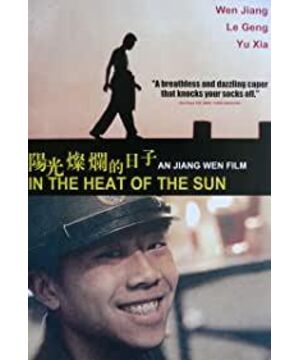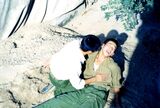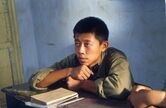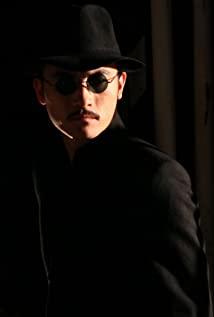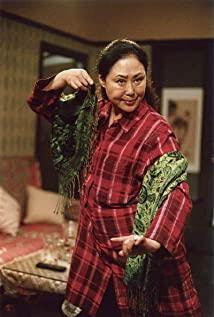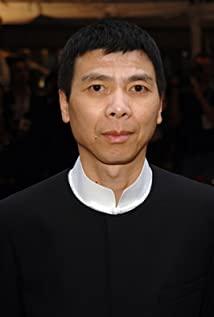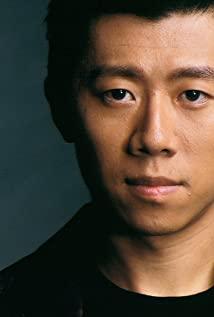Along with an inner monologue of Ma Xiaojun's adulthood, the director tells the story in a straightforward manner. The film tells the story of the growth and life of Beijing teenager Ma Xiaojun in the 1970s. Through this story, the director shows the cruelty of youth in the context of the historical era. theme. The film underscores this theme through a multitude of hazy and illusory camera images, as well as music and sound effects that depict the inner changes of the characters. The picture of the film as a whole presents a romantic style tone, but it also has a certain sense of documentary. In order to achieve certain characteristics of the times, the director used a large number of symbolic expressionist light sources. For example, in the clip of Ma Xiaojun skipping class, there are typical anti-natural and unconventional light sources outside the classroom. When Ma Xiaojun escaped from the classroom, the corridor was dark. The "outside world" at the end of the corridor is bright and blurred. On the one hand, it expresses the beauty of the form and the "hazy" background of the times. On the other hand, it expresses the director's deconstruction of the "system" of the school; When I arrived at my home in Milan, there was also a strong expressionist light source outside the window. This distinctive style expresses the director's subjective emotions to a certain extent, and it is a reminiscence expression. The film also uses a lot of fixed camera positions and relatively stable camera movements for narration, such as the clip of a hundred people, using long-range shots with fixed camera positions, omitting unnecessary plots, speeding up the narrative rhythm, and playing a role in leaving blank. The combination of fixed camera positions and long shots can better reflect a sense of documentary, and reflects Bazin's documentary aesthetics. The combination of the overall hazy and documentary feeling of the film seems to be a real memory, and it seems to be an illusory fantasy. Fake interlaced, virtual and real. Using the internal montage of the lens at the same time in a relatively stable movement, it has an ironic effect. The overall black humor is ironic about the tragedy of the era and the youth of teenagers in the era. The film has the theme of expressing the growth of Ma Xiaojun's character. The characters are shaped through the three emotional clues of family, love and friendship. The opening chapter explains that Ma Xiaojun's family lacks the discipline of his father. Love, this is also the youth of that era where teenagers have nowhere to vent. Ma Xiaojun changed from throwing schoolbags as a child to teenagers. Throwing schoolbags is an editing point. The action of Ma Xiaojun diving at the end marks the official end of Ma Xiaojun's youth. The symbolic actions of throwing schoolbags and diving symbolize Ma Xiaojun's growth. The film uses a large number of color styles dominated by warm tones, expressing the heat of summer and restless youth, and at the same time in line with the "sunshine" title. After the group fight did not break out, the Lao Mo restaurant, where Ma Xiaojun and Liu Yiku celebrated their birthdays, used red and yellow as the main colors to set off a warm atmosphere; another example was the Milan shampoo paragraph, which was full of sunshine and expressed a youthful mood. Restless and happy. In addition to the warm tones, there are several cool-toned scenes in the film, such as Ma Xiaojun looking for his companions to watch the movie, the scene is mainly dark blue and cold, showing Ma Xiaojun's lonely heart; , the cool blue tone shows Ma Xiaojun's despair and desire for Milan. At this time, the tone also reflects the changes and transitions of Ma Xiaojun's characters. Ma Xiaojun's outbreak is no longer cowardly and timid at that moment. The use of cold and warm tones in the film shows the effect of contrast and irony, showing the director's reasonable control of the scene and the poetic expression of the cruel era. In the sublimation of the characters in the film - Ma Xiaojun's diving section, the director showed the audio-visual style to the fullest. The extreme upside down and downside shots show Ma Xiaojun's desperate inner world, as well as his heavy steps on the platform. This road means Ma Xiaojun's growth. , he is destined to not get Milan, destined to not be able to integrate into the group, the long and slightly sad music is a farewell to the past, the jump marks the end of the character's teenage years, the use of subjective and objective lenses, the partners kick him again and again Into the water, it is the performance of the fate of the times. Jiang Wen is a director at the end of the fifth generation and the beginning of the sixth generation. His audio-visual style has unique ideas. "Sunny Days" shows the deep theme of youth and cruelty in the background of the times, which is similar to "Once Upon a Time in America" and "The Cruel Story of Youth". expression. In addition, the director's unique lens method, the combination of unreal and documentary, shows the director's in-depth discussion of the film itself, that is, whether the film can truly express reality, but also the innovation of film language. This film uses "sunshine" to satirize that absurd era, reflect on the real society, and examine our present day. Jiang Wen is a director at the end of the fifth generation and the beginning of the sixth generation. His audio-visual style has unique ideas. "Sunny Days" shows the deep theme of youth and cruelty in the background of the times, which is similar to "Once Upon a Time in America" and "The Cruel Story of Youth". expression. In addition, the director's unique lens method, the combination of unreal and documentary, shows the director's in-depth discussion of the film itself, that is, whether the film can truly express reality, but also the innovation of film language. This film uses "sunshine" to satirize that absurd era, reflect on the real society, and examine our present day. Jiang Wen is a director at the end of the fifth generation and the beginning of the sixth generation. His audio-visual style has unique ideas. "Sunny Days" shows the deep theme of youth and cruelty in the background of the times, which is similar to "Once Upon a Time in America" and "The Cruel Story of Youth". expression. In addition, the director's unique lens method, the combination of unreal and documentary, shows the director's in-depth discussion of the film itself, that is, whether the film can truly express reality, but also the innovation of film language. This film uses "sunshine" to satirize that absurd era, reflect on the real society, and examine our present day. Jiang Wen is a director at the end of the fifth generation and the beginning of the sixth generation. His audio-visual style has unique ideas. "Sunny Days" shows the deep theme of youth and cruelty in the background of the times, which is similar to "Once Upon a Time in America" and "The Cruel Story of Youth". expression. In addition, the director's unique lens method, the combination of unreal and documentary, shows the director's in-depth discussion of the film itself, that is, whether the film can truly express reality, but also the innovation of film language. This film uses "sunshine" to satirize that absurd era, reflect on the real society, and examine our present day. Jiang Wen is a director at the end of the fifth generation and the beginning of the sixth generation. His audio-visual style has unique ideas. "Sunny Days" shows the deep theme of youth and cruelty in the background of the times, which is similar to "Once Upon a Time in America" and "The Cruel Story of Youth". expression. In addition, the director's unique lens method, the combination of unreal and documentary, shows the director's in-depth discussion of the film itself, that is, whether the film can truly express reality, but also the innovation of film language. This film uses "sunshine" to satirize that absurd era, reflect on the real society, and examine our present day.
View more about In the Heat of the Sun reviews


